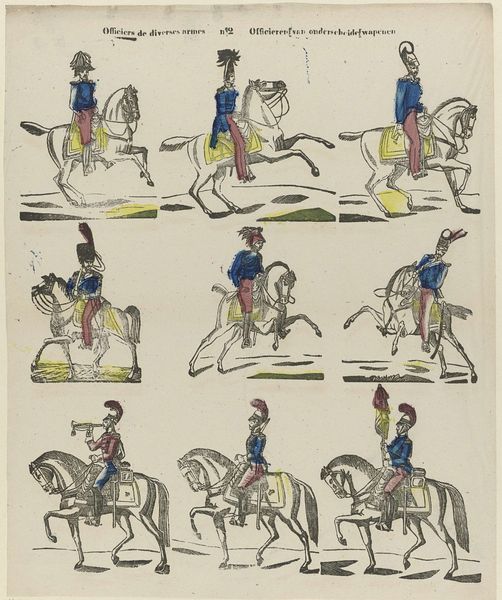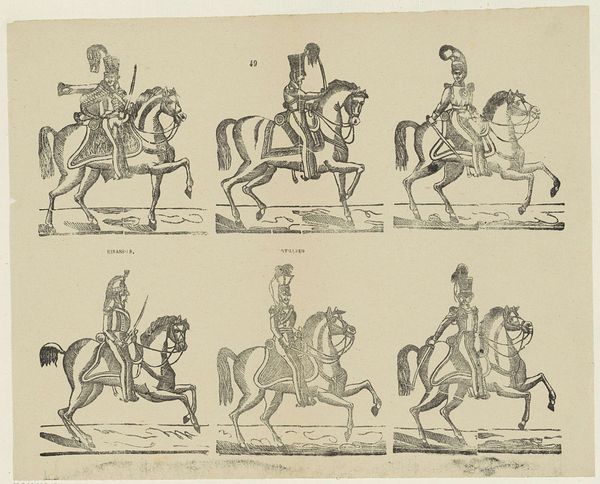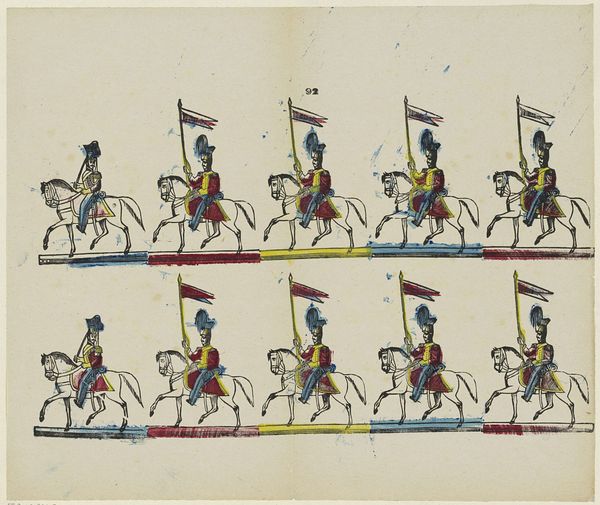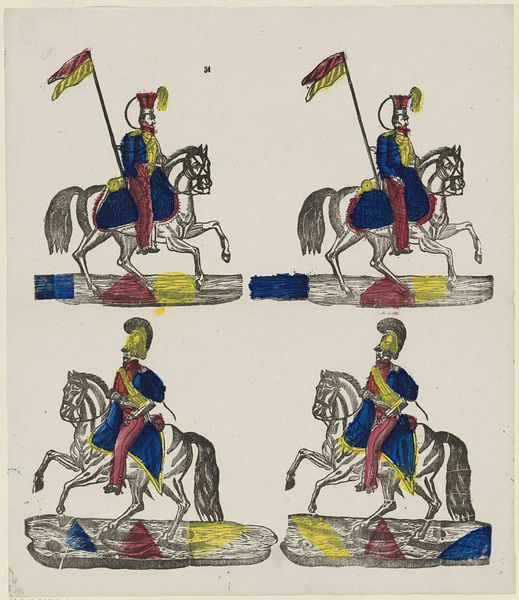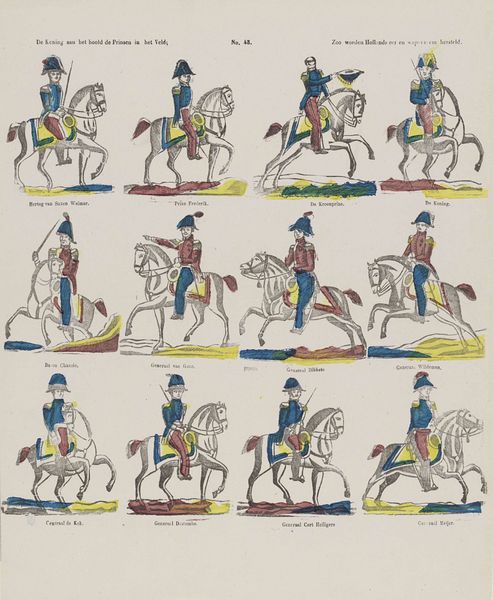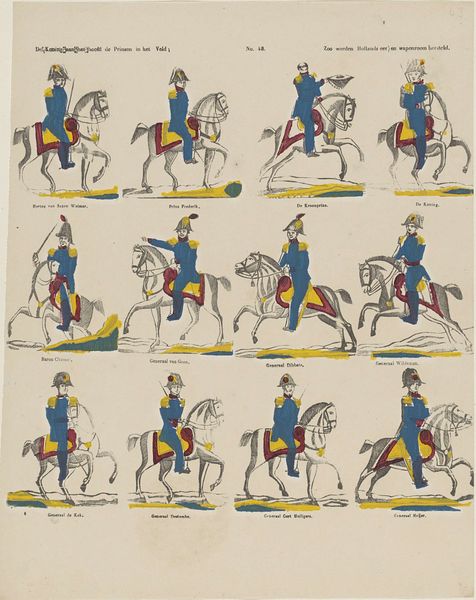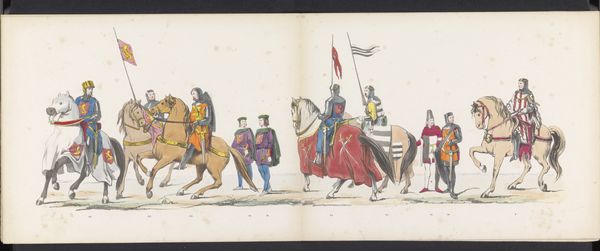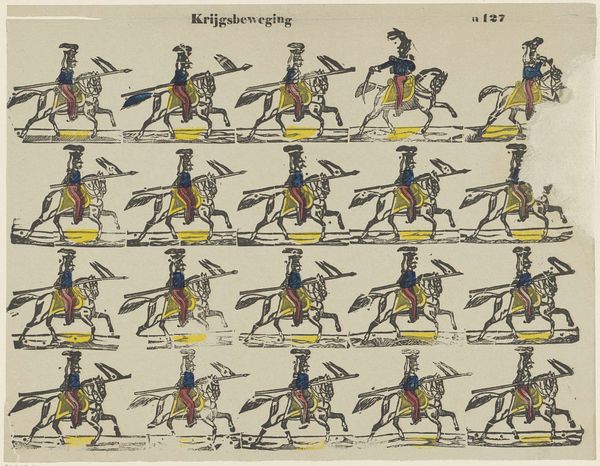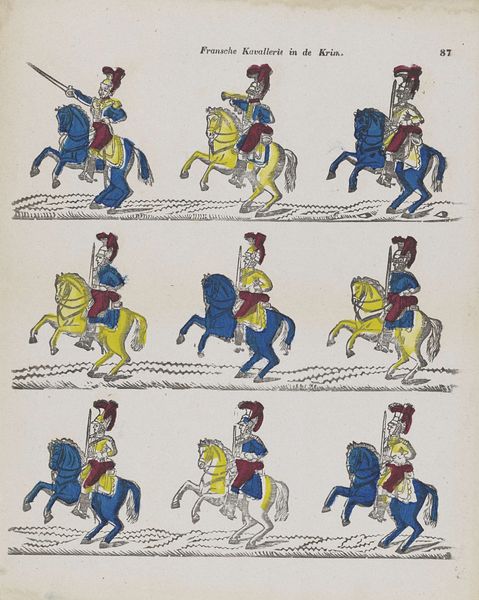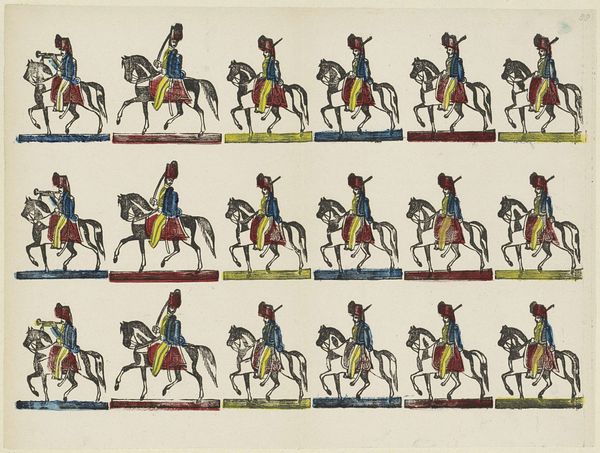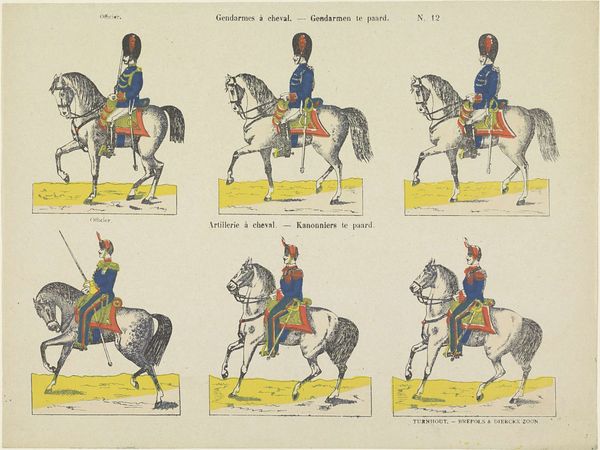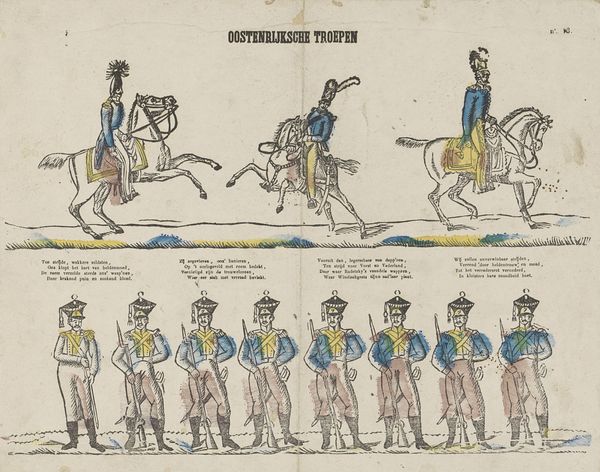
Dimensions: height 305 mm, width 385 mm
Copyright: Rijks Museum: Open Domain
Editor: Here we have “Militairen te paard,” or “Soldiers on Horseback,” created sometime between 1827 and 1894. It's a print made using lithography, drawing and pencil, and the use of watercolors really catches my eye. What strikes me is the almost comical presentation of military might. How do you interpret this work? Curator: The seeming "comic" effect is a great entry point. Consider the period: post-Napoleonic Europe. These images of soldiers, particularly their flamboyant uniforms, speak to a resurgence of aristocratic power attempting to reassert itself through visual display. What kind of messages about societal norms and militarism might be present here? Editor: So, it's less about actual military power, and more about projecting an image of authority in a changing social landscape? Curator: Exactly. The detailed rendering of the uniforms versus the almost cartoonish depiction of the horses underscores the emphasis on spectacle. What might that spectacle be masking or compensating for, do you think? Who did these soldiers represent, and for whom? Editor: Maybe masking the instability of the time? Projecting a strength that isn’t necessarily there anymore? It's really interesting to think about the social anxieties that might be reflected here, hidden within what seems like a straightforward military scene. Curator: Precisely. By examining the work within its historical and political context, we can decode how visual representations like these participated in larger narratives of power and control. It's a reminder that even seemingly simple images can be deeply implicated in complex social dynamics. Editor: I’ll definitely look at similar works differently going forward. Thanks.
Comments
No comments
Be the first to comment and join the conversation on the ultimate creative platform.
